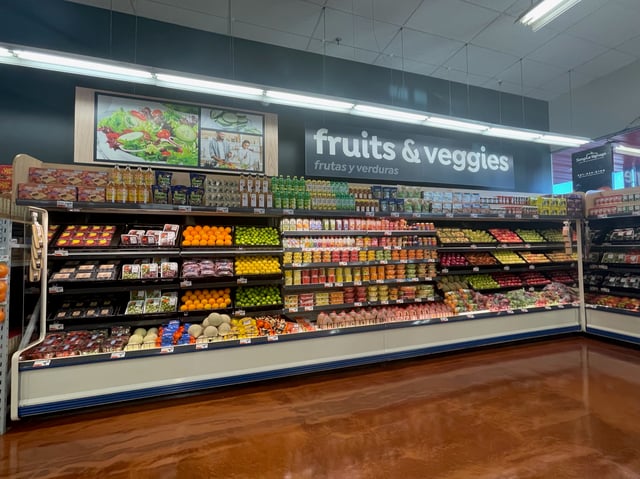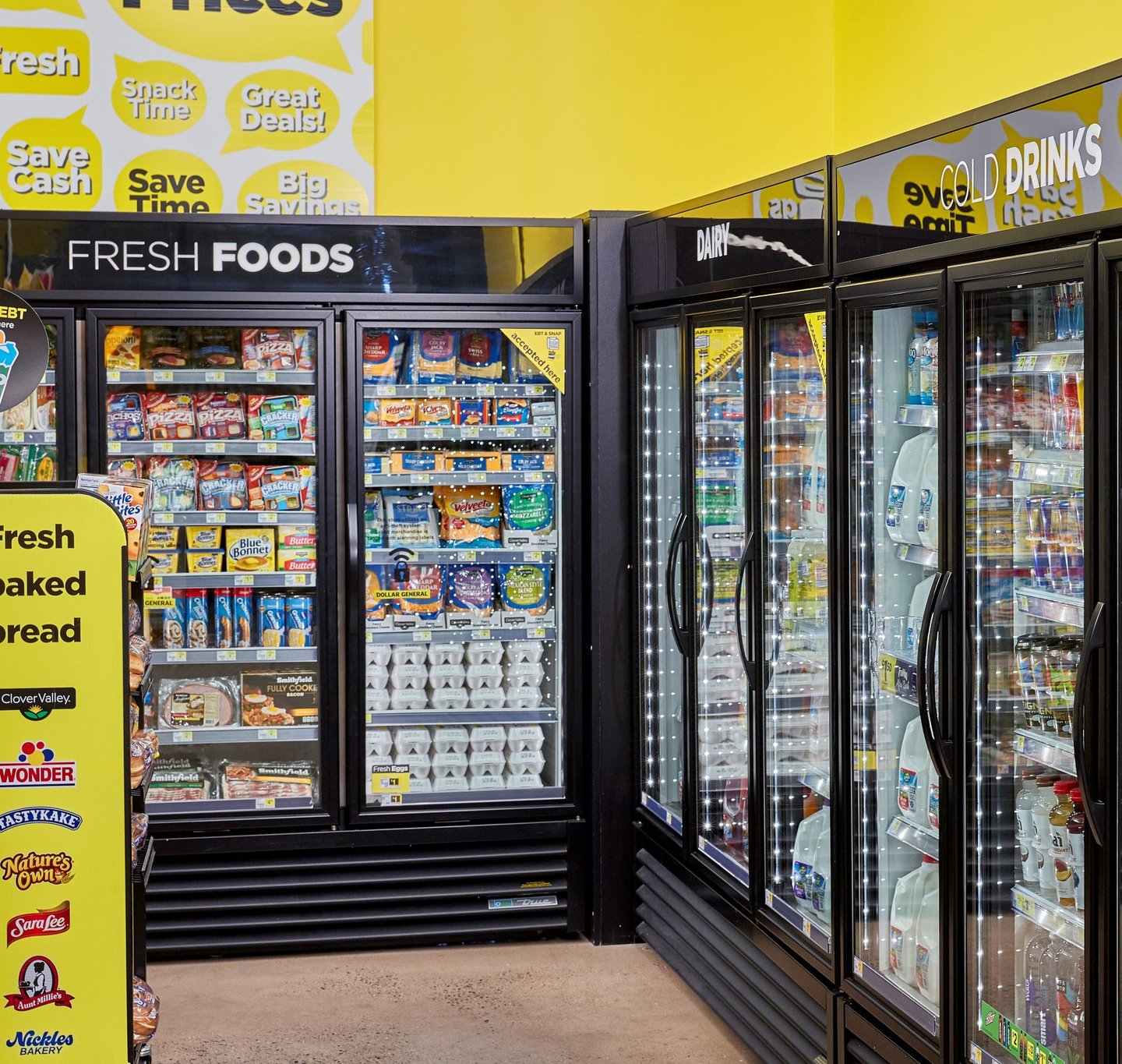How Deep Discounters Keep Customers Coming Back
At a time of escalating grocery prices, extreme-value food retailers present an especially attractive option for budget-conscious consumers. The mission of these grocers goes well beyond present problems such as high inflation, supply chain headaches, and rising wages for a shrinking workforce, however. For these businesses, low prices are a way of life.
How do they do it, though? Progressive Grocer spoke to some of the most prominent extreme-value retailers in operation to find out the various ways they deliver value, as well as who their target customers are, what sets them apart besides deep discounts on everyday essentials, and where the future of extreme-value retailing is headed.
The Lowdown on Low Prices
“When it comes to combating macroeconomic pressures, our business was designed to withstand fluctuations in the market,” explains Scott Patton, VP national customer interaction services at Batavia, Ill.-based Aldi U.S., which operates more than 2,000 stores in 36 states. “Features like our smaller-format stores, carefully curated private label range of groceries and even our quarter cart system all add up to tangible savings that we pass on to our customers. These differences may seem small but become increasingly important as operational costs increase.”
“Grocery Outlet has always been focused on value, delivering customers the brands they love at prices they can afford,” stresses Layla Kasha, chief marketing officer and chief new store growth officer at Emeryville, Calif.-based Grocery Outlet, which has more than 400 stores across the country. “Our model is unique because we are opportunistic buyers, meaning a lot of what we buy has already made it through the supply chain, and our independent operators can select products from our inventory — passing the savings on to customers and insulating us a little bit from inflation, though we have felt some of the same effects as everyone else. Ultimately, our model helps people stretch a dollar, which is needed even more right now.”
Going into more detail about the company’s opportunistic buying model and independent owners and operators, Kasha notes: “While we have the ability to purchase excess inventory and leverage long-standing relationships with name brands, it really is up to our independent operators to cater to their customers and determine what products will perform best in their community. Our model allows us to provide shoppers with great prices on staple items, while also creating a treasure hunt for unexpected and unique items that are fun and help add some variety to their weekly grocery run.”
St. Ann, Mo.-based Save A Lot, with about 900 stores in 32 states, similarly employs an independent licensing model that gives owners, known as retail partners, the flexibility to respond to the needs of their local communities. As CEO Leon Bergmann puts it: “Retailers truly operate as a community grocer supported with the buying power of a national brand. It’s a key differentiator for Save A Lot.”
Beyond that, the chain has a few other tricks up its sleeve. “While supply chain challenges are impacting the grocery business as a whole, Save A Lot collaborates closely with vendors to stock top-selling items and project store needs in advance, securing inventory at competitive prices,” says Bergmann, who notes a similarity with Aldi: “We are also able to keep prices low by stocking shelves with our over 55 private label brands. The power of maintaining a large private label assortment means we can provide customers with quality products that are on par with the national brands at significant savings — as much as 40% or 50% on some products.”
Further, in common with Aldi and Grocery Outlet, Save A Lot offers a limited assortment — in Save A Lot’s case, only about 3,000 SKUs — which, according to Bergmann, “means a smaller retail footprint with minimal backroom warehouse space, resulting in lower overhead costs, which also help to keep prices low.”
He asserts: “Our banner is built on the philosophy that we can offer outstanding value by focusing on a core assortment of products customers need every day, with a heavy emphasis on private label brands that are as good as, or better than, the national-brand equivalent.”
However, Bergmann also points out: “With a model like ours, it’s critical to find balance in the supply chain, ensuring just-in-time delivery to stores and promoting inventory turnover in our warehouse to protect the bottom line. Competing in the extreme-value category is fierce, and our focus must always be on how we can continue to provide value to our retail partners that in turn enables them to deliver outstanding value to consumers.”
For Dollar General, PG’s 2021 Retailer of the Year, which has been focused on aggressively growing its store count, along with its fresh and frozen offerings, it’s all about the ability “to provide convenient and affordable access to the everyday products they need and want,” observes Crystal Luce, senior director of public relations at the Goodlettsville, Tenn.-based retailer, which currently operates more than 18,000 stores in nearly every state.
According to Luce, Dollar General occupies a unique space as an extreme-value retailer.
“We strive to serve communities across the country as today’s neighborhood general store, as we are not a full-service grocer and don’t consider ourselves to be a dollar store,” she notes. “Our stores serve communities who might be miles away from the nearest grocery store and otherwise be forced to drive farther and pay more for their food and household necessities.”
Who’s Shopping
In addition to those in food deserts who need access to inexpensive groceries, extreme-value retailers are often dedicated to serving the broadest range of shoppers, because who doesn’t appreciate a bargain?
“At our core, saving people time and money is what we do, so it’s no surprise that our shoppers truly span all ages, locations and income brackets,” affirms Patton. “Every day, new customers are discovering just how much they can save by switching to Aldi. This ever-expanding following and support from our fans is what has propelled us to continue our coast-to-coast expansion.”
“Our shoppers span a variety of socioeconomic settings,” says Save A Lot’s Bergmann. “The common trait is they are all searching for value while feeding quality, nutritious foods to their families. As such, they benefit from our competitive pricing on our assortment of key products — including our private label items — that they need most every day.”
He adds that the company has continued to broaden its reach through such efforts as its “Like, A Lot A Lot” advertising campaign, which launched in 2021, “making the brand more fun and accessible, and sharing our message of quality and value to younger families.”
Meanwhile, Grocery Outlet understands that despite a clear desire for value, some customers wish to be surprised and delighted as well.
“Our target shopper is someone looking for great products at deeply discounted prices,” notes Kasha. “They are discerning and value quality, but also have a goal of saving money. They have a budget, but there’s a line item that is devoted to the unexpected. People emotionally connect to Grocery Outlet’s treasure-hunt model, especially when money is tight.”
The Total Experience
Most shoppers prefer low prices, but it’s the total shopping experience that keeps them coming back for more. That’s where Grocery Outlet’s famed treasure-hunt aspect really comes into play.
“Much of what we sell are things people can’t find anywhere else,” asserts Kasha. “That’s the whole crux of the treasure-hunt experience. Each store has limited products, tailored specifically to their customers and curated by the independent operators or the Grocery Outlet team. So, while we’re a national brand, customers are still shopping at a local store and having a local, unique experience. What makes shopping with us fun is the same thing that makes a concert fun — walking in, you have a general sense of what’s going to be there, but there are a few things that you’ll experience one time.”
Save A Lot also emphasizes its neighborhood cred. “As local business owners, our retail partners have the ability to customize their assortment to cater to the tastes and preferences of customers in the local communities they serve,” notes Bergmann, who also points out the stores’ fresh meat cut in-store daily and produce departments providing “a great selection of fresh fruits and vegetables,” along with its private brands offering “the same great quality customers can get with a national brand, but often at a significant value.”
The Future of Extreme-Value Retailing
What’s ahead for the extreme-value channel? Value and discount grocery is already one of the fastest-growing retail segments, and Bergmann cites a forecast from Hamburg, Germany-based market data company Statista that it will grow by 4.2% annually through 2026.
“We believe we will continue to see new players entering and competing in this space,” the chief executive predicts. “Now, more than ever, customers are looking for ways to access value, particularly in the grocery aisles. We believe that retailers will always continue to compete on price and quality, even more so during inflationary periods.”
He further notes that “[m]ore customers than ever are willing to try private label brands, and we expect to see continued growth” in that area.
And while “[c]ompetition is a constant” in extreme-value retailing — not to mention in all corners of the retail industry — Bergmann is convinced that Save A Lot offers “a compelling offering for customers.”
“Value-oriented shoppers will always look for ways to stretch their dollar, and with inflation and gas prices driving consumers to count every penny, extreme-value retailing will only continue to grow both in terms of popularity and importance for families,” says Kasha. “Grocery Outlet is uniquely nimble, getting products from suppliers to our stores quickly and efficiently, which is difficult to re-create. This model makes us stand out from other value-oriented retailers and allows us to pass along savings to our customers without much overhead.”
For his part, Patton admits that while he “can’t predict the future of value-based retailing, what I know is that Aldi has been saving people money on groceries and household items for decades, and that we have set the standard for this business model. We remain more committed than ever to keeping our prices low in every market we serve, despite what is going on in the world around us.”








